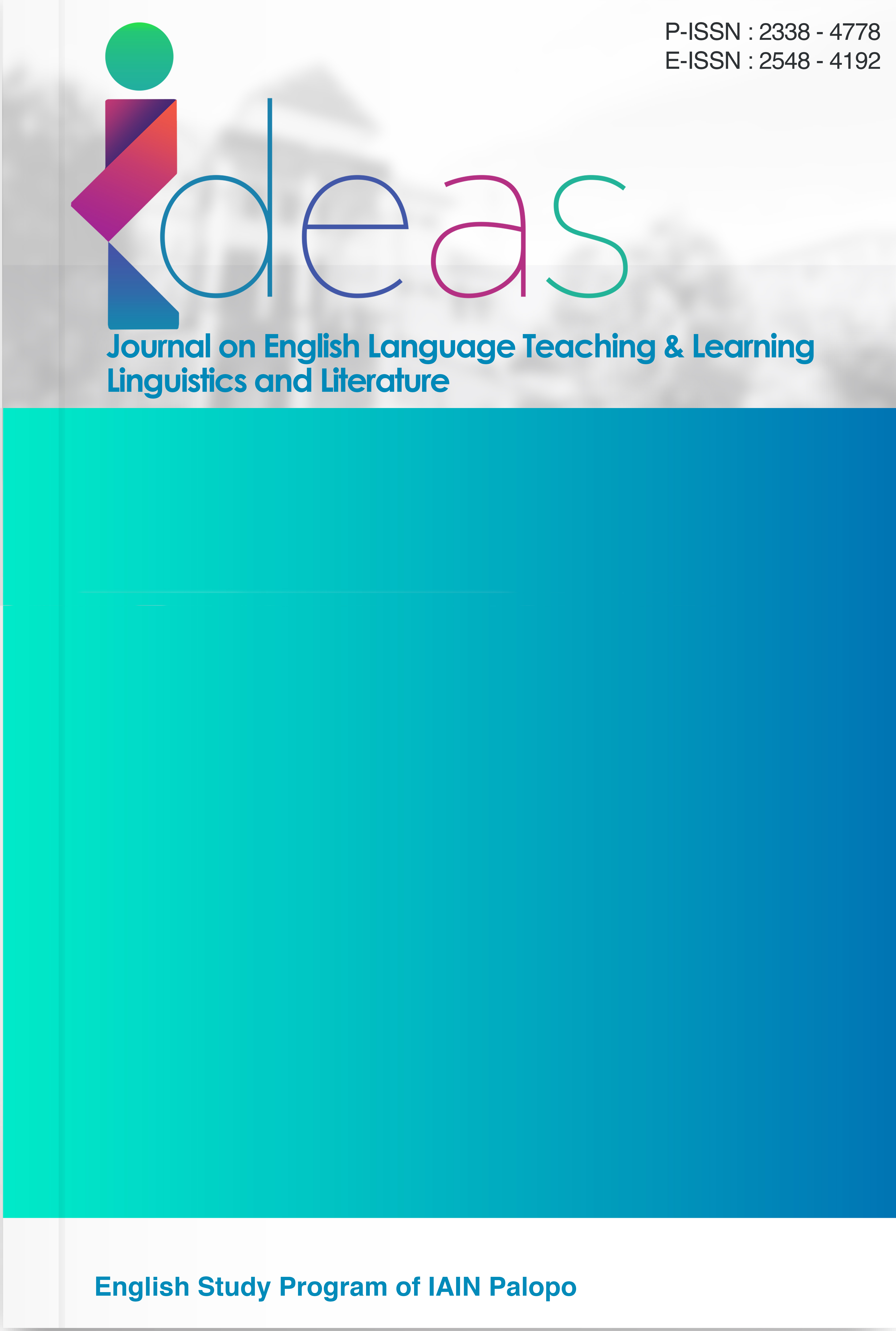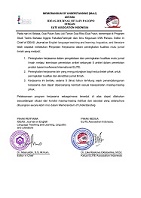Expressive Illocutionary Act Uttered by Main Characters in The Look Both Ways Movie
DOI:
https://doi.org/10.24256/ideas.v13i2.7385Keywords:
Expressive, Illocutionary, MovieAbstract
This research analyzes the types of expressive illocutionary acts in the Look Both Ways movie. Data were collected through non-participant observation by watching the film multiple times to identify and classify expressive utterances by the main characters, Nathalie and Cara. The data were categorized using Searle and Vanderveken’s (1985) theory, supported by Halliday and Hasan’s (1985) context of situation. A total of 39 expressive acts were found, with thanking (35.9%) as the most frequent. The context of situation field, tenor, and mode significantly influences the meaning and function of each act. This study highlights the importance of expressive illocutionary acts in building emotional connections and shaping character relationships, while also contributing pragmatic insights into film discourse and enriching linguistic research in cinematic contexts.
References
Austin, J. L. (1962). How to do things with words. London: Oxford University Press.
Bani, M., & Masruddin, M. (2021). Development of Android-based harmonic oscillation pocket book for senior high school students. JOTSE: Journal of Technology and Science Education, 11(1), 93-103.
Dewi, K. S., & Candra, K. D. P. (2024). The illocutionary acts found in main characters’ conversation of the Maleficent movie. IDEAS: Journal of English Language Teaching and Learning, Linguistics and Literature, 12(2), 2685–2696. https://doi.org/10.2456/ideas.v12i2.5457
Halliday, M. A. K., & Hasan, R. (1985). Language, context, and text: Aspects of language in a social-semiotic perspective. Oxford: Oxford University Press.
Ismayanti, D., & Syam, A. T. (2022). The Community Manipulation through Big Brother’ s Tyranny in George Orwell’ s Nineteen Eighty-Four. IDEAS: Journal on English Language Teaching and Learning, Linguistics and Literature, 10(2), 1556â-1569.
Leech, G. N. (1983). Principles of pragmatics: Longman.
Mete, N., & Winarta, I. (2024). Types of expressive illocutionary acts found in the movie True spirit by Sarah Spillane. IDEAS: Journal of Language Teaching and Learning, Linguistics and Literature, 4(2), 193-200. https://jurnal.stkipahsingaraja.ac.id/index.php/jpmi/article/view/743/610
Searle, J. R., & Vanderveken, D. (1985). Foundations of Illocutionary Logic. Cambridge: Cambridge University Press.
Suastha, M. P. V., & Kesi,A.K. (2025Expressive Illocutionary Acts in the Ken Dedes Webtoon: A Digital Pragmatic Perspective. Retorika: Jurnal Ilmu Bahasa, 11(1), 82-87. DOI: http://10.55637/jr.11.1.11187.81-87
Sudaryanto, M. M. (2017). Metode penelitian bahasa: Tahapan, strategi, metode, dan tekniknya. Depok: Rajawali Pers.
Downloads
Published
Issue
Section
Citation Check
License
Copyright (c) 2025 Ayu Novia Pratiwi, Komang Dian Puspita Candra

This work is licensed under a Creative Commons Attribution-ShareAlike 4.0 International License.
Authors retain copyright and grant the journal right of first publication with the work simultaneously licensed under an Attribution-ShareAlike 4.0 International (CC BY-SA 4.0) that allows others to share the work with an acknowledgement of the work's authorship and initial publication in this journal.
Authors are able to enter into separate, additional contractual arrangements for the non-exclusive distribution of the journal's published version of the work (e.g., post it to an institutional repository or publish it in a book), with an acknowledgement of its initial publication in this journal.
Authors are permitted and encouraged to post their work online (e.g., in institutional repositories or on their website) prior to and during the submission process, as it can lead to productive exchanges, as well as earlier and greater citation of published work (See the Effect of Open Access)




